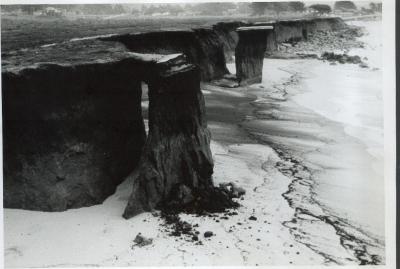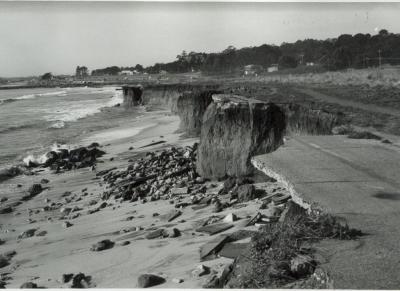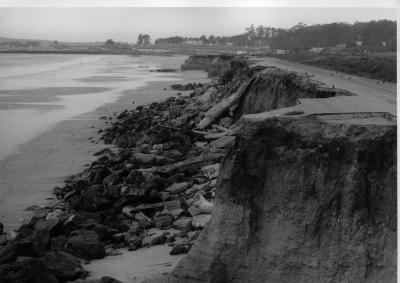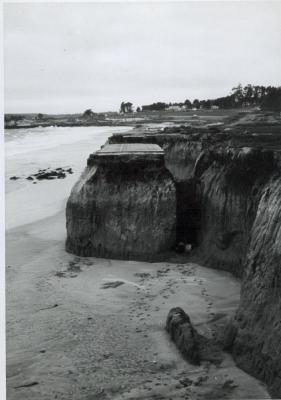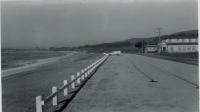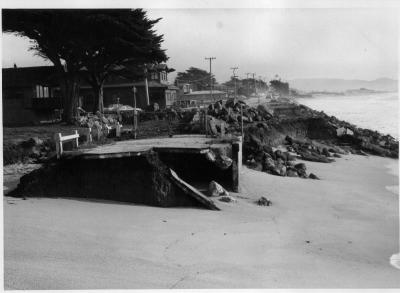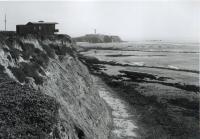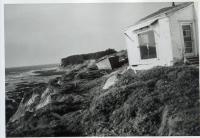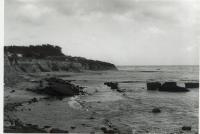Geologist Ken LaJoie, the cameraman and I were standing on the cliffs near Surferâs Beach in 1980. Surferâs Beach is located across Highway 1 from El Granada, the town founded by the Ocean Shore Railroad. I was interviewing Lajoie as we shot footage for âThe Mystery of Half Moon Bayâ?.
Ken worked for the USGS in Menlo Park and had been measuring cliff erosion on the Coastside for years. These are his comments more than 20 years agoâit would be fascinating to hear what an expert says todayâsince 1980 there has been a lot of work done in and around the breakwater.
Ken LaJoieâs comments (1980)
âHalf Moon Bay is a unique geographical formation where the potential for erosion is very high due to soft material exposed in sea cliff.
âNatural erosion is due to dynamic equilibrium.. After the breakwater was built that very delicate dynamic equilibrium was upset. The waves were refocused on the south side of the breakwater.
âThe sand that was supplied by the cliff erosion north of the breakwater was denied to the beaches to the south.
âTwo factors together caused accelerated erosion rate south of the breakwater. Rate cliff is receding between 1957 when breakwater was built and 1971. The highest rates were in order of eight feet per year. From 1971 to present highest rate we measured are around 12 feet were year. As rate continue to erode in area south of the breakwater eventually theyâll be into the highway.
âThe erosion will jeopardize the highway.
âNow either the cliff is cemented up or a series of jetties (or groins) will have to be built. No matter what the solution it will probably be a temporary solution. Whatever method used to arrest erosion south of the breakwater itself will refocus the erosion farther south and even today concern that depletion of sand in this region will eventually affect the beaches to the south and that this depletion of sand as it progresses will affect the state beaches, Dunes Beach to the south.
âWhen the breakwater was built, the Corps of Engineers recognized that there would be a slight increase in erosion south of the breakwater. Small amount of rip rap was placed south of the breakwater to prevent a rapid rate of erosion in that area.
âWe can see from where the rip rap is today that it didnât stop the erosion.
âThe photos we took in 1971 show large masses of rip rap which is nothing more than large boulders, large pieces of cement.
âIn many instances, here in Half Moon Bay, car bodies placed were placed at the baes of the cliff to try to slow the erosion down.
âIn 1971 this rip rap was at the base of the cliff and we can see today that itâs sitting out in the middle of the beach. Very ineffective.
âThe waves have attacked the cliff and theyâve eroded back at least 80-100 feet beyond the rip rapâ¦â?
â¦To be continuedâ¦





